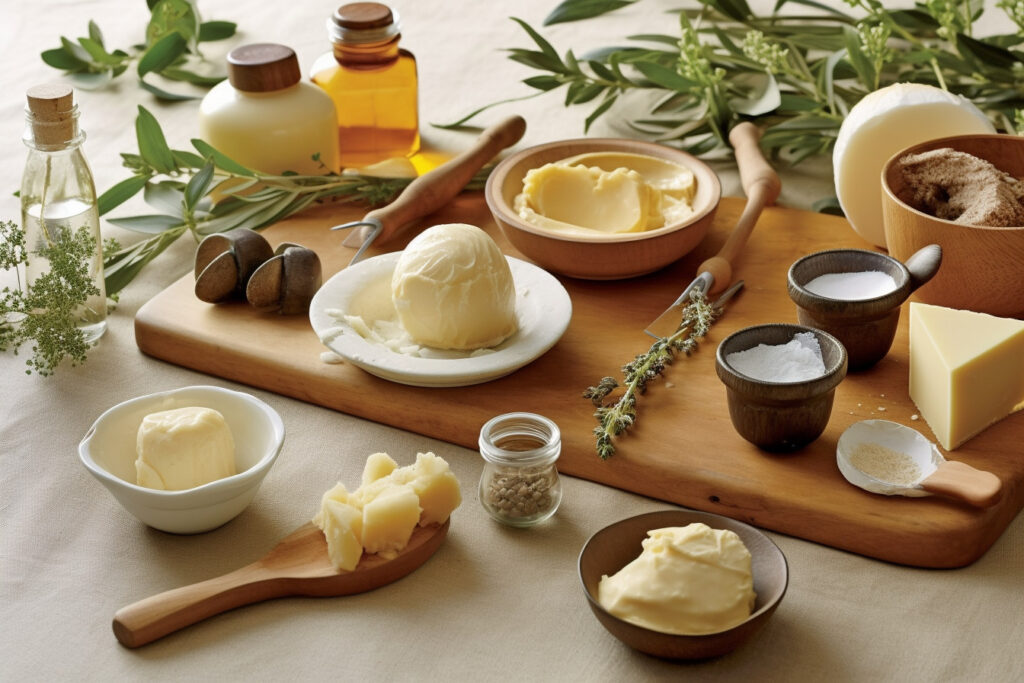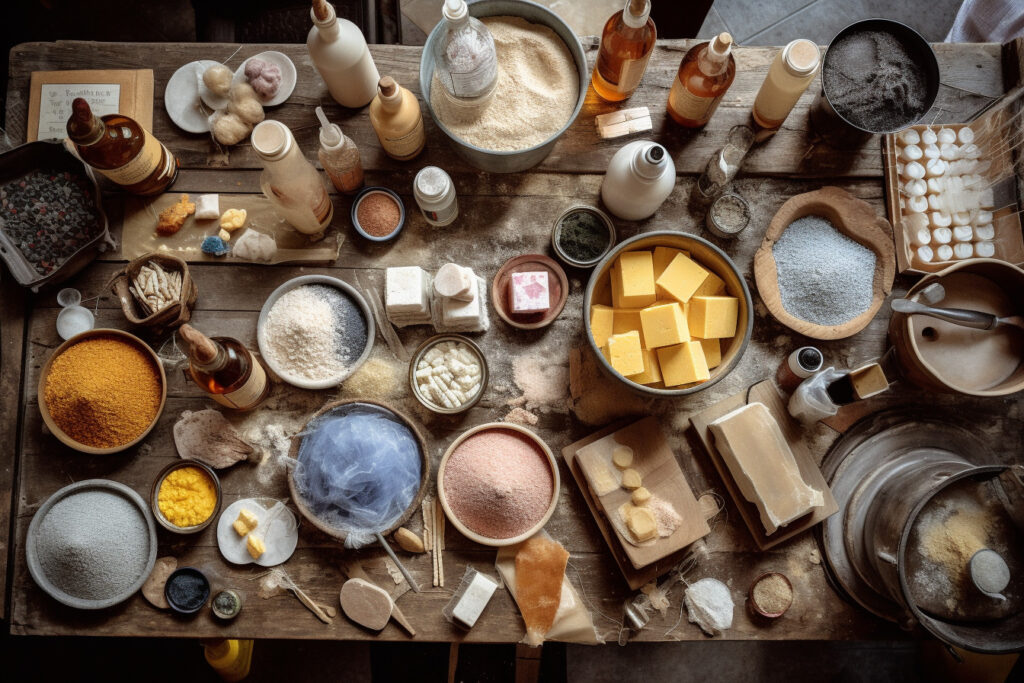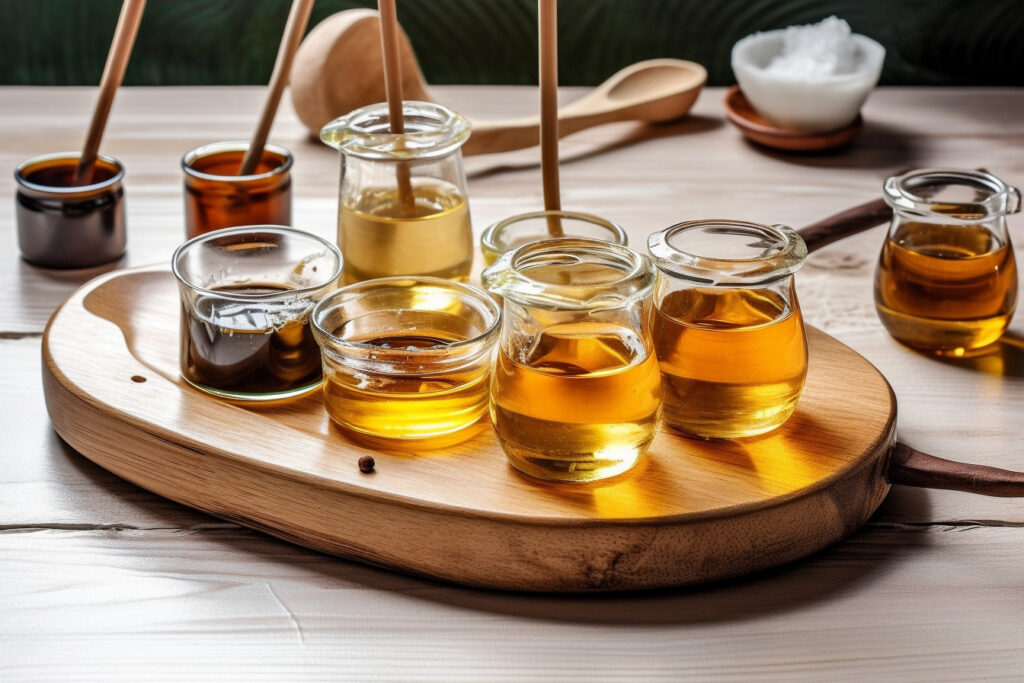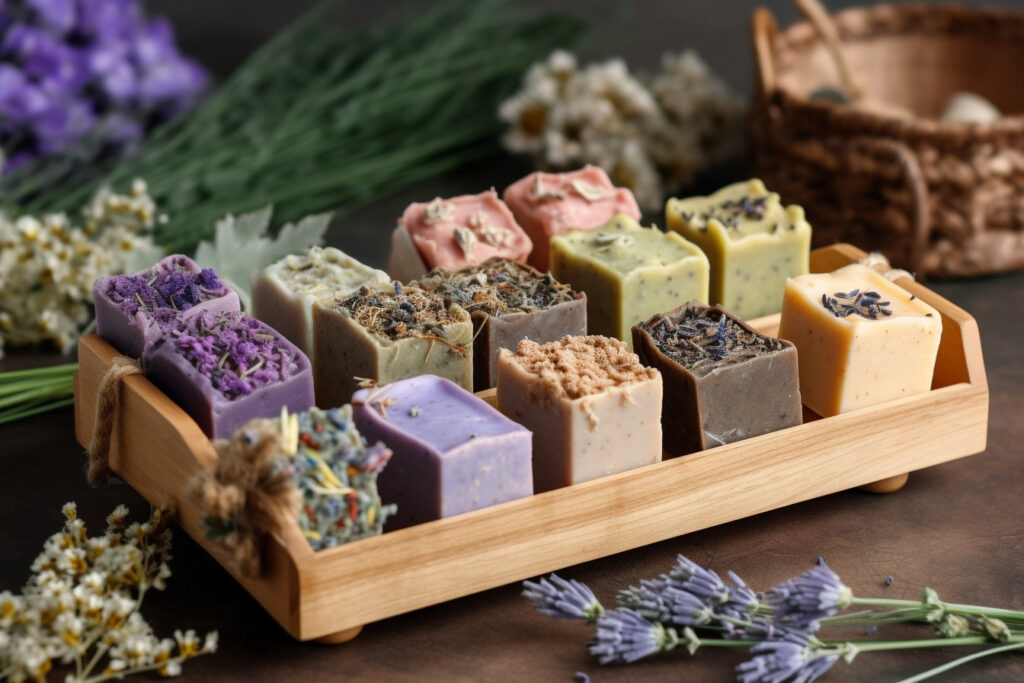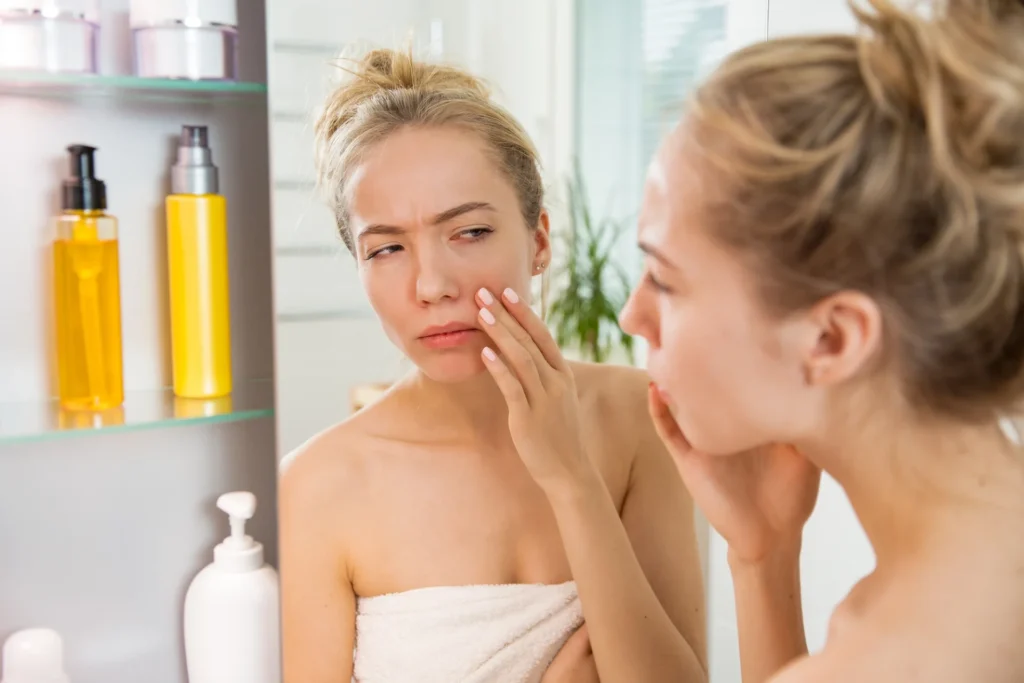Are you tired of using commercial soaps that are loaded with harsh chemicals and synthetic fragrances? Have you considered making your own soap but felt intimidated by the process? Fear not, because we have an easy all-natural soap recipe that is sure to leave your skin feeling clean and nourished.
This recipe uses simple ingredients that can be found at your local health food store or online. Not only will you know exactly what goes into your soap, but you’ll also be able to customize it with essential oils for a delightful scent.
So gather your ingredients and let’s get started on this fun and rewarding DIY project!
Choosing Your Ingredients
You’ll be amazed at the variety of ingredients you can choose from to create a luxurious, customized bar of soap that’ll leave your skin feeling nourished and refreshed.
When selecting your ingredients, it’s important to consider their source and sustainability. Look for companies that use organic or sustainably sourced materials, such as coconut oil, olive oil, shea butter, and essential oils.
Using natural ingredients in your soap also comes with a host of benefits for both you and the environment. Natural oils and butters provide moisture without stripping your skin of its natural oils, while essential oils can provide aromatherapy benefits.
Additionally, using sustainable ingredients helps reduce our impact on the planet by avoiding harmful chemicals and synthetic materials found in many commercial soaps. By choosing all-natural ingredients for your soap recipe, you’re not only pampering yourself but also supporting a healthier planet for future generations.
Equipment and Safety Precautions
Make sure to gather the necessary equipment and take proper safety precautions before beginning, so you don’t end up in hot water. Here’s what you’ll need:
- A heat-resistant container or pot
- A kitchen scale
- Rubber gloves and goggles
- Thermometer
- Stick blender
- Soap molds
It’s important to always wear gloves and goggles when working with lye. Lye is a caustic substance that can burn skin, eyes, and clothing. Make sure your workspace is well ventilated and keep children and pets away.
[product_blocks id=”1830″]
When it comes to measuring ingredients, accuracy is key. Use a kitchen scale for precise measurements of both oils and lye. Always add lye to water (never the other way around) in a heat-resistant container or pot while wearing protective gear.
Keep an eye on the temperature as the mixture heats up, making sure not to overheat it or let it cool too much too quickly. With these safety measures in place, you’re ready to start creating your all-natural soap!
Step-by-Step Instructions for Soap Making
Let’s dive into the step-by-step process of making your own sudsy masterpiece! First, gather all of your ingredients and equipment. Double-check that you have everything on hand before beginning to ensure a smooth soap-making experience. Once you’ve got everything ready, it’s time to start.
Begin by melting the oils and butters in a pan over low heat. Make sure to keep an eye on them so they don’t burn. While waiting for the oils to melt, mix together lye and water in a separate container. This mixture will get extremely hot, so be sure to wear protective gear like gloves and goggles and work in a well-ventilated area.
Once both mixtures are ready, slowly pour the lye mixture into the melted oils while stirring constantly until fully combined. From here, it’s time to add any additional fragrances or colors before pouring the mixture into molds and letting it set for 24-48 hours.
While making homemade soap is relatively easy, there are some common mistakes that can happen along the way. For example, not properly measuring out ingredients can result in an unsuccessful batch of soap or even injury from incorrect levels of lye being used. If this happens, don’t fret – there are troubleshooting tips available online or from other experienced soap makers who can help you get back on track.
The benefits of homemade soap include knowing exactly what goes into your product as well as being able to customize scents and textures to fit your preferences. Plus, making soap at home is more environmentally friendly than purchasing commercially made products with excess packaging.
Adding Essential Oils for Scent
Adding essential oils to your homemade soap creates a luxurious and personalized scent experience that can provide various benefits. Blending oils, such as lavender, rosemary, peppermint, and citrus oils, can help create a unique fragrance that suits your preferences.
Additionally, essential oils have been used for centuries in aromatherapy to promote relaxation and reduce stress levels. When adding essential oils to your soap recipe, it’s important to choose high-quality oils from reputable sources. Start by selecting one or two scents that complement each other well and add 10-20 drops per pound of soap base.
[product_blocks id=”1830″]
Experiment with different combinations until you find the perfect blend that suits your needs. Not only will your soap smell amazing, but you’ll also enjoy the benefits of aromatherapy every time you use it.
Benefits of Aromatherapy:
- Can promote relaxation and reduce stress levels
- May improve mood and energy levels
- Can relieve symptoms of anxiety and depression
- Known for its ability to enhance overall well-being
Curing and Storing Your Soap
Now that your soap is complete, give it the time and care it deserves by properly curing and storing it to ensure a long-lasting, high-quality product that will leave you feeling proud and accomplished.
Proper storage is crucial for maximizing shelf life and preventing spoilage. The first step is to let your soap cure for at least 4-6 weeks in a cool, dry place with good ventilation. This allows excess water to evaporate and the soap to harden, resulting in a longer-lasting bar that produces a richer lather.
Once your soap has cured, wrap each bar individually in wax paper or plastic wrap to protect it from moisture and dust. Avoid using shrink-wrap or vacuum-sealed bags as they can trap moisture and cause mold growth.
Store your wrapped bars in an airtight container away from direct sunlight and heat sources. Be sure to label the container with the date of production so you can keep track of how long each batch has been stored. With proper storage techniques, your all-natural soap can last up to two years.
To avoid common mistakes when curing and storing your soap, be mindful of temperature changes which can affect its texture and scent. If you notice any discoloration or strange odors, this may indicate spoilage or improper storage conditions. Troubleshoot by checking if the wrapping has been damaged or if there are any signs of moisture build-up inside the container.
By following these simple steps for proper curing and storage of your homemade all-natural soap, you can enjoy a luxurious bathing experience every day!
Frequently Asked Questions
How long does the soap usually last before it expires?
When it comes to homemade all natural soap, the shelf life can vary depending on the ingredients and how it’s stored. On average, a bar of natural soap can last anywhere from 4-6 weeks with regular use. However, if you take proper storage precautions and keep your soap in a cool, dry place away from direct sunlight and moisture, you can extend its shelf life up to 6 months or more.
To preserve the quality of your soap even further, consider adding natural preservatives like vitamin E oil or grapefruit seed extract to your recipe. With these simple storage tips and ingredient additions, you can enjoy your handmade all natural soap for longer periods of time without worrying about it expiring too soon.
Can I use food coloring instead of natural colorants for my soap?
If you’re thinking about using food coloring in your soap instead of natural colorants, there are some things to consider.
While it may seem like a quick and easy solution for achieving the desired hue, there are drawbacks to using food coloring in soap. First, food coloring can often fade over time, resulting in a less vibrant appearance. Additionally, some types of food coloring may not be skin-safe or may cause irritation.
There are alternative options for coloring soap naturally that are safer and longer-lasting than food coloring. You could try using herbs or spices such as turmeric or beetroot powder, which offer both color and added benefits to the skin. Alternatively, you could use natural clays or micas that have been specifically formulated for use in soap-making.
Ultimately, while it may be tempting to take a shortcut with food coloring, opting for natural alternatives will result in a better quality product that’s safe and beneficial for your skin.
Is it safe to use soap made with lye on sensitive skin?
Oh, you bet it’s safe to use soap made with lye on sensitive skin. In fact, it’s the lye that helps create a gentle and effective cleansing bar.
But here’s the irony – while lye is perfectly fine in soap making, it can be irritating if not handled properly during production.
That being said, there are alternative ingredients for those who have lye sensitivity or would prefer not to use it in their soaps. Coconut oil, olive oil, and shea butter are just some examples of natural substitutes that can be used instead.
Just make sure to do your research and follow proper safety precautions when handling any ingredients for soap making.
Can I add herbs or flowers to my soap for exfoliation?
Looking for a way to add some herbal exfoliation to your soap? Look no further than natural additives like herbs and flowers!
These can be added to your soap recipe in a variety of ways, from grinding them up and incorporating them into the soap mixture itself, to sprinkling them on top of the soap after it has been poured into molds.
Some popular choices for herbal exfoliation include lavender buds, rose petals, and ground oatmeal. Just be sure to do your research beforehand and make sure that any herbs or flowers you choose are safe for use on the skin.
With a little bit of experimentation and creativity, you can create all-natural soaps that are both beautiful and effective!
How do I properly dispose of any leftover lye or soap-making materials?
Did you know that improper disposal of lye can be detrimental to the environment? It’s crucial to handle leftover lye or other soap-making materials with care. Proper lye disposal is a crucial aspect of eco-friendly soap making techniques.
You can dispose of any unused lye by diluting it in water and pouring it slowly down the drain while running cold water. Alternatively, mix it with sawdust or kitty litter before throwing it away in a sealed container labeled as hazardous waste.
Soap-making materials like oils and butters should also be disposed of responsibly by recycling or reusing them. By following these proper disposal methods, you’ll ensure that your soap-making process remains environmentally friendly and safe for everyone involved.
Conclusion
Congratulations! You’ve successfully made your own all-natural soap. Now you can bask in the glory of being a self-sufficient, DIY guru who doesn’t need to rely on store-bought soap like those plebeians.
[product_blocks id=”1830″]
Your friends and family will surely be impressed by your newfound skills, and you can smugly inform them that you know exactly what’s going into your soap. But let’s not forget the real reason why we’re making our own soap: to save money.
Because spending hours researching ingredients, buying expensive equipment, and risking chemical burns is definitely cheaper than just buying a bar of soap from the grocery store. Plus, it’s not like time is valuable or anything.
All joking aside, making your own all-natural soap can be a fun and rewarding experience if done safely and with proper resources. And who knows? Maybe one day you’ll even start selling your homemade soap at local markets for an outrageous profit margin.
Just don’t forget us little people when you become a millionaire soap tycoon.


